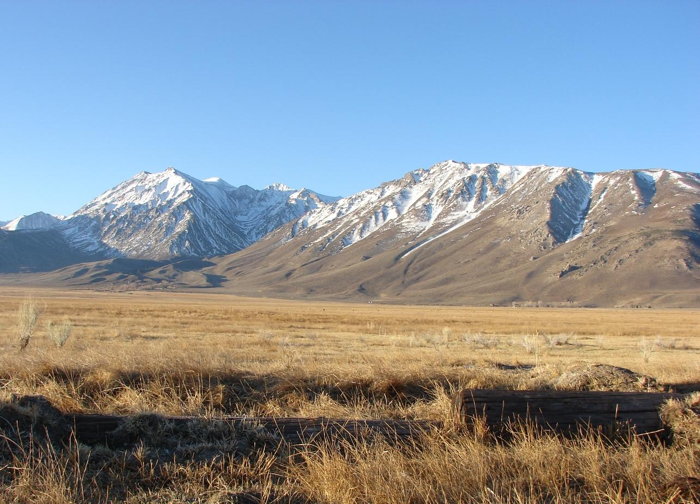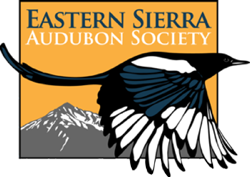Crowley Lake Area Important Bird Area
Text and photos from National Audubon Society IBA Database Site Profile
Crowley Lake Area Site Description
Long Valley, one of the most volcanically active areas of California, lies north of the head of the Owens Valley in the eastern Sierra. Fed by several streams rushing down from mountains (incl. Convict Ck. and Upper Owens River), this vast alkali meadow is surrounded by robust Sagebrush scrub which climbs up high, conifer-covered slopes on all sides. Though it originally filled with water seasonally, it now supports both seasonal wetlands as well as Crowley Reservoir. Crowley, at 6,500 acres, is one of the largest bodies of water in California east of the Sierran axis, and its shallow edges remain marshy year round, providing exceptional wildlife habitat. Cattle graze much of Long Valley, though an ambitious project to fence critical stream banks and lakeshore beginning the late 1990s resulted in a partial recovery of the meadow system, including dense rush and sedge marshes and willow thickets. The majority of this IBA is owned by the Los Angeles Dept. of Water and Power (LADWP) and is leased to ranchers. The Bureau of Land Management additionally owns land surrounding the lake.

Crowley Lake Important Bird Area © Photo by Andrea Jones
Conservation Issues
Concern over the Greater Sage-Grouse has led to the LADWP's installing specialized fencing around leks . LADWP has also fenced large areas of feeder streams on the north side of the reservoir (incl. the Owens River), and has conducted Bald Eagle and Sage Grouse monitoring for several years. On the other hand, the area receives very high (and increasing) recreational use, particularly during the nesting season when birds are the most sensitive. A landfill on the northeast side of the lake that is responsible for a surprising amount of trash strewn across the valley, and both this and plans to site a major airport just north of Crowley along Hwy. 395 to serve Mammoth's burgeoning population deserve close monitoring. See LADWP's Lek Access Policy and Viewing Guidelines for details on how you can help.
Ornithological Summary
Long Valley supports what is now one of the largest populations of Greater Sage-Grouse in the state, a species that depends on the area's low level of development for unobstructed seasonal elevational migrations (e.g. upslope in summer following nesting). Bank Swallow maintains its southernmost colony left in California on the eroded banks of Crowley (up to 2000 pr., fide Gaines 1988), and Snowy Plover nest in small numbers at the north end of the reservoir and on the alkali lakes scattered across the valley floor (e.g. west of Benton Crossing Rd., DS). Prairie Falcons breed in nearby rock outcroppings, and up to 24 Peregrine Falcon chicks have been successfully hacked out of a tower installed by LADWP (G. Coufal, LADWP, in litt.). The concentrations of waterfowl year round (but especially in fall and spring) are nearly unprecedented in the region, and several species of ducks and grebes have large breeding populations here. Like other interior wetlands, Crowley supports large numbers of post-breeding waterbirds in late summer (e.g. American White Pelican), which concentrate at the Owens River mouth. Shorebirds pour through by the hundreds (occasionally thousands) in spring and fall, with over 100 Spotted Sandpipers recorded on recent single-day surveys (Shuford et al., In press B). It is conceivable that with continued recovery of the wet meadow ecosystem here, Long Valley could once again support breeding Yellow Rail, known historically from the area (Grinnell and Miller 1944). In winter, the grassland of Long Valley hosts one of the major raptor concentrations east of the Sierra.
Help us learn more about the birds at this IBA! Enter your birding data online at California eBird! (http://ebird.org/california/)
Click here for a bar chart of eBird observations in the Crowley Lake area


